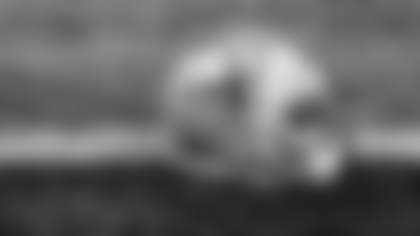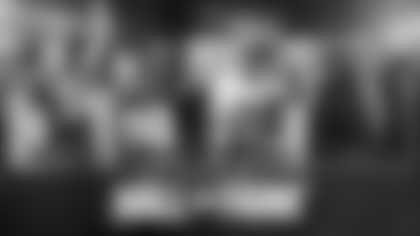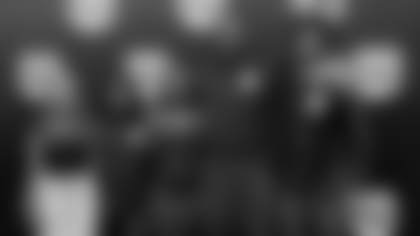Todd Graffagnini, the radio play-by-play announcer for the New Orleans Pelicans, is a walker. You can find Graff pounding the pavement somewhere around this great city almost every day. During this pause in games we've asked the New Orleans native to let fans tag along and learn about the routes he takes and some of the city's sports history.
Hello again everyone. I hope you are staying safe and taking care of each other wherever you may be. It's that time again to get back out in the fresh air and get a nice long walk in. This time our journey will take us through the Mid-City/CityPark area of our fair city. The highest compliment I can give this walk is that I enjoyed it so much, I'm going to do it again very soon. Like today as a matter of fact. So let's get to it.
We'll start this particular walk on Gentilly Boulevard, directly across the street from one of most historic race tracks in the country, the Fair Grounds. Going back to 1838, it is the second oldest site of horse racing in America, and the tradition of Thanksgiving Day at the races is still celebrated by many a family every year. Of course. the Fair Grounds is also home to JazzFest, when for two weekends in late April and early May, the world descends on New Orleans to celebrate music, food and crafts. Take a right on Fortin Street and the grandstand/clubhouse will be on your right. You get a sense of how long the stretch run is for the horses at this track, notoriously one of the longest in racing. You also get the feeling of how important this piece of land is for the culture and the city of New Orleans.

Lenny Vangilder has been a part of the local sports scene for over three decades. Currently the vice president at Crescent City Sports, Lenny also was the publicity director for the Fair Grounds from 1998-2009. He discussed the significance of the Fair Grounds and horse racing locally.
"There's history showing racing going on at that site at Gentilly pre-dating the Civil War," Vangilder said. "Louisiana was one of the first states to actually have horse racing. It's a sport, it's an agribusiness that generates more than a billion dollars in the state of Louisiana annually. That's what's going on in the late fall and winter at the Fair Grounds. Then of course in a normal year when racing ends in late March there's a quick turnaround and then half a million people show up over two weekends time for JazzFest so obviously thats what a lot of people know the Fair Grounds for but it does have a major role the rest of the year. There's a lot of history in terms of the Fair Grounds name (dating back to 1872) and in terms of racing."
I asked Lenny if he could pinpoint the greatest race in the history of the track. It's not an easy question to answer.
"Wow. It's hard to say what defines 'greatest'. There have been a lot of historic moments there," Vangilder said. "In 1942 they actually created a race for Whirlaway (1941 Triple Crown winner) to run in, which became the Louisiana Handicap, which is still run to this day. There have been all kinds of great horses that have come through the Fair Grounds, especially in the last 20 years with Kentucky Derby winners like War Emblem and Funny Cide. There's so many good horses and there's so many high quality races that are run at the track every year it's hard to pin down one."

Time to take a left on Mystery Street and then an immediate right on to Esplanade Avenue, one of the signature streets in our city. Oak trees, and beautiful homes dominate the scene, so make sure you take it all in. You'll pass historic St. Louis Cemetery No. 3 on your right as you head over Bayou St. John and Wisner Boulevard and the entrance into City Park. It really is amazing how this area has transformed over the last few years with the amount of walking paths, gardens, and new facilities that are now in existence. Along with the natural beauty that has always been here, City Park has now become a destination when just as recently as 10 years ago, an area heavily damaged by Hurricane Katrina, it was not.

Head straight toward the New Orleans Museum of Art. and veer around Collins Diboll Circle toward Franklin D. Roosevelt Mall. On your right another gem, the newly constructed Louisiana Children's Museum, which unfortunately right now is closed. Keep going west down the Mall heading toward Marconi Drive. As you walk around Beau Bassich Circle and head back east on the Mall on your right will be another historic venue. Tad Gormley Stadium is the holy grail for high school football in this city, having hosted some of the most heralded matchups and huge crowds going back to the late 1930s.

The horseshoe stadium not only boasts football and soccer as a host, but a U.S. Olympic Track and Field Trials in 1992, a Lollapalooza in 1996, and even The Beatles played the venue in 1964. Vangilder is very familiar with Tad Gormley also, as he ran the press box during the Trials...not only a great 10 days for the stadium, but for the city itself, which was a huge underdog to even host the event.

"The backstory of the Trials is truly fascinating. How they (Greater New Orleans Sports Foundation) ended up getting it was a massive upset. The world of track and field is closed in in that you end up going to the same places more times than not, places that are really all about track and field," Vangilder said. "Once New Orleans was awarded the Trials then they had a short period of time to go out and raise the money to needed to renovate Tad Gormley. What that event did was everything went from wooden to metal bleachers, a cinder to all-weather track, and you had tents that rang the top of the stadium bowl that served as corporate suites.
"Of all of the vernacular that we use in the world of sports, there is maybe no more magic than the word 'Olympic'. Had this just been the National Championships in track and field in a non-Olympic year coming to New Orleans, it wouldn't have had an impact. You had some really interesting stories that would play themselves out over the course of those 10 days. New Orleans had never been a track town up until then but what it showed you more than anything else was that it didn't have to be a mainstream event to make people come out and witness what was truly a spectacular event of athletics.
"The great part about it is now we're 28 years removed and we've still got a renovated Gormley out there and had that not happened who knows what Tad Gormley would be at this point."
Now we're into the second half but this walk continues to impress, as you exit the Mall take a right onto Victory Drive and head past the New Orleans Botanical Gardens and Storyland. Cross over to the other side of the road with City Putt on your right and head back toward the museum entrance again. Now cross the Bayou for a second time on Wisner.

This time, instead of heading back on Esplanade, veer to the right at the Shell station and head down Moss Street and walk along the Bayou. Cabrini High School will be on your left and the refurbished Magnolia Bridge (which you can cross now) on your right. Keep heading straight till you come to one of my favorite street names in the city - Grand Route St. John - we are now in the homestretch, continue all the way down Grand Route till you come back to where you began, Gentilly Boulevard.

I hope you enjoy this walk as much as I did. Remember, the route laid out is just a guideline, but as I mentioned earlier, there are so many options now in this area of the city, feel free to break off and find your own route.The miles will melt away and you'll discover a part of the city you probably had under-appreciated over the last few years.
That's it for this week, remember to stay safe out there and take care of yourself and each other. We'll talk again soon.
Todd Graffagnini is the radio play-by-play announcer for the New Orleans Pelicans and a digital contributor to the New Orleans Saints.













